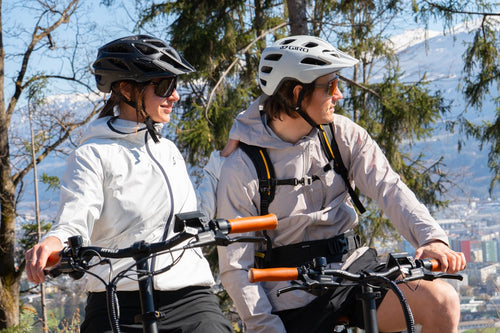

Sweet spot found: Why your e-bike motor thinks like a car – and how you can ride further with optimal cadence
If you want to ride your e-bike efficiently, you shouldn't just switch on Eco mode and hope the battery lasts. There's more to it than that — more specifically, a physical interplay between cadence, torque, and motor control. Sound technical?
Von Vincent Augustin |
3 minutes read time

In this article, you'll learn why your e-bike motor essentially works like a car engine—and how you can use this knowledge to ride further, be more economical, and better understand your bike.
What does cadence have to do with a car engine?
When driving a car, we know that if you're in the wrong gear, you'll use more fuel. E-bikes also have an optimal motor speed , but this is influenced by your pedaling frequency (cadence) . The motor detects how fast you're turning the cranks and adjusts its assistance accordingly.
Many modern e-bike motors (such as those from Bosch, Shimano, DJI, Bafang, or Brose) operate most efficiently at a cadence of around 60 to 90 revolutions per minute (RPM). Within this range, the motor can achieve more with less energy—comparable to the "sweet spot" in a car between 1,500 and 2,500 rpm.
🔗 You can find out more about cadence and RPM in our glossary.
Eco mode: economical but demanding
In Eco mode, the engine operates at reduced power, meaning less power from the engine and more responsibility for you. If you now "burble along" in too high a gear with a low cadence, the engine recognizes that the rider needs a lot of help here and delivers the appropriate amount of torque. This consumes energy.
Conversely, if you pedal lightly but at a high cadence, you can make the motor run more efficiently. This is the trick: Eco mode works best when you ride at the optimal cadence.
How your cadence affects efficiency

As you can see, the engine operates most efficiently between 60 and 90 RPM. Below this speed, energy consumption increases, and above this speed, efficiency decreases. So, it's worth adjusting your driving style to this range.
How to find your personal “sweet spot”
Here are a few tips on how you can adapt your driving style:
✅ Choose the right gear
Make sure that you can pedal easily and fluidly – not with force “push”, but with rhythmic “turn”.
✅ Use the cadence display
Many e-bike displays (e.g., the Bosch Purion 200 or Nyon, but also Bafang) show you your current cadence. Use this data actively.
✅ Drive with foresight
Change gears well in advance of climbs to maintain the optimal cadence – just like when you downshift in a car.
✅ Test the difference
Ride the same route once at a low cadence and once at 80-90 RPM – you will notice the difference in battery consumption .
Want to get even more out of it? For tech nerds and fine-tuners

Want to know exactly? Then check out these options:
🔧 Configure the motor via app
With some manufacturers (e.g. Specialized, Bosch with Flow app) you can fine-tune the support level, dynamics and torque yourself.
📈 Analyze driving data
With apps or GPS trackers you can compare cadence, speed and battery consumption over routes.
💡 Training approach
Many e-bikers not only increase their range but also their endurance through targeted cadence control – a win-win situation.
Conclusion: Cadence + Eco mode = battery friendship
When you ride at the optimal cadence, your e-bike motor not only helps you be more efficient, but also more economical. It's like driving a car: If you have the gears and engine speed under control, you'll ride further – and better.
You don't need any technical knowledge or expensive hardware – just a little attention while pedaling and a feel for your bike's "sweet spot."
🛠️ Final tip: On your next ride, observe how the engine sounds and feels when you vary the cadence. You'll notice: Even machines have favorite beats. 😉🎶🚴




